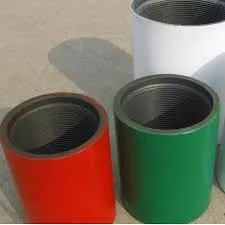- Afrikaans
- Albanian
- Amharic
- Arabic
- Armenian
- Azerbaijani
- Basque
- Belarusian
- Bengali
- Bosnian
- Bulgarian
- Catalan
- Cebuano
- Corsican
- Croatian
- Czech
- Danish
- Dutch
- English
- Esperanto
- Estonian
- Finnish
- French
- Frisian
- Galician
- Georgian
- German
- Greek
- Gujarati
- Haitian Creole
- hausa
- hawaiian
- Hebrew
- Hindi
- Miao
- Hungarian
- Icelandic
- igbo
- Indonesian
- irish
- Italian
- Japanese
- Javanese
- Kannada
- kazakh
- Khmer
- Rwandese
- Korean
- Kurdish
- Kyrgyz
- Lao
- Latin
- Latvian
- Lithuanian
- Luxembourgish
- Macedonian
- Malgashi
- Malay
- Malayalam
- Maltese
- Maori
- Marathi
- Mongolian
- Myanmar
- Nepali
- Norwegian
- Norwegian
- Occitan
- Pashto
- Persian
- Polish
- Portuguese
- Punjabi
- Romanian
- Russian
- Samoan
- Scottish Gaelic
- Serbian
- Sesotho
- Shona
- Sindhi
- Sinhala
- Slovak
- Slovenian
- Somali
- Spanish
- Sundanese
- Swahili
- Swedish
- Tagalog
- Tajik
- Tamil
- Tatar
- Telugu
- Thai
- Turkish
- Turkmen
- Ukrainian
- Urdu
- Uighur
- Uzbek
- Vietnamese
- Welsh
- Bantu
- Yiddish
- Yoruba
- Zulu
casing and tubing connections
Casing and Tubing Connections An Overview
In the oil and gas industry, the extraction of hydrocarbons from subterranean reservoirs requires a meticulous approach to well construction. Among the essential components of this process are casing and tubing, which are critical for maintaining the integrity and safety of the well. Understanding the various connections used in these systems is vital for ensuring operational efficiency and minimizing risks.
What are Casing and Tubing?
Casing refers to a series of pipes that are installed in the wellbore after drilling. Its primary purpose is to provide structural support to the well, prevent the collapse of the borehole, and isolate different rock layers from each other to maintain well control during the drilling process. Various types of casing include surface casing, intermediate casing, and production casing—each serving a specific function at different depths of the well.
Tubing, on the other hand, is the pipe through which the hydrocarbons flow from the reservoir back to the surface. It is installed inside the casing and can be easily removed for maintenance or replacement. Tubing's primary role is to provide a pathway for the produced fluids, and it must be designed to handle the expected pressures and corrosive environments of the produced fluids.
Connections in Casing and Tubing
Casing and tubing connections are critical points in a well since they are interfaces where the pipes meet and create seal integrity. The integrity of these connections directly impacts the safety and productivity of the well. Let’s discuss some of the common connection types used in casing and tubing
1. Threaded Connections These are among the most traditional and commonly used methods for connecting casing and tubing. The ends of the pipes are machined to create threads, which are then screwed together. While threaded connections are relatively simple to install, they can be vulnerable to issues such as galling and stress corrosion cracking.
casing and tubing connections

2. Welded Connections In some applications, particularly for high-pressure environments, welded connections provide a permanent solution. The ends of the casing or tubing are fused together using welding techniques, creating a strong bond that reduces the risk of leaks. However, welding requires specialized skills and equipment, making it more time-consuming and costly.
3. Flanged Connections Flanged connections involve the use of flanges—flat pieces of metal with holes for bolting—attached to the ends of the pipes. These connections allow for easier inspection and maintenance, as they can be unbolted and reassembled easily. However, they require careful alignment to ensure a proper seal and may not be as compact as threaded or welded solutions.
4. Slip-on Couplings These connections are designed to slip over the ends of the casing or tubing and are secured with bolts or screws. This connection type is relatively easy to install and allows for quick disassembly, making it suitable for temporary setups or during maintenance periods.
Challenges and Considerations
While casing and tubing connections are designed to ensure safety and functionality, they are not without challenges. Factors such as temperature fluctuations, pressure changes, and corrosive environments can compromise the integrity of these connections over time. Regular inspections and maintenance are crucial to identify wear and damage early, thereby preventing costly failures.
Additionally, the choice of connection type must consider the specific conditions of the well, including the type of fluids being produced, depth, and the overall design of the well. Engineers must evaluate trade-offs between installation ease, cost, and long-term performance to select the most appropriate connection method.
Conclusion
The successful extraction of hydrocarbons relies heavily on the integrity and reliability of casing and tubing connections. As the oil and gas industry continues to evolve, ongoing advancements in technology and materials will improve these connections’ performance and safety. Understanding the various connection types and their applications is essential for professionals in the field, ensuring that operations can proceed efficiently and safely, ultimately leading to the sustainable development of vital resources.
-
Well Casing Extension Couplings – Applications and InstallationNewsJun.06,2025
-
Types of Crossover Subs in Drilling & CompletionNewsJun.06,2025
-
Key Features of High-Quality Tubing Pup JointsNewsJun.06,2025
-
Installation and Maintenance Tips for Steel Couplings for PipeNewsJun.06,2025
-
How to Select the Right Pup Joint for Oil & Gas OperationsNewsJun.06,2025
-
Applications of Stainless Steel Pipe CouplingsNewsJun.06,2025







